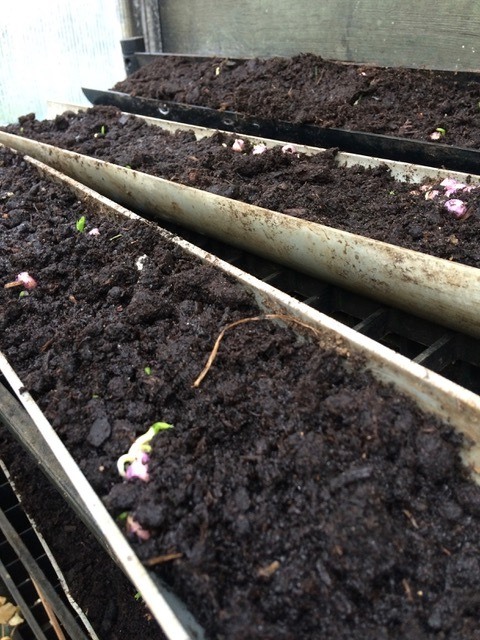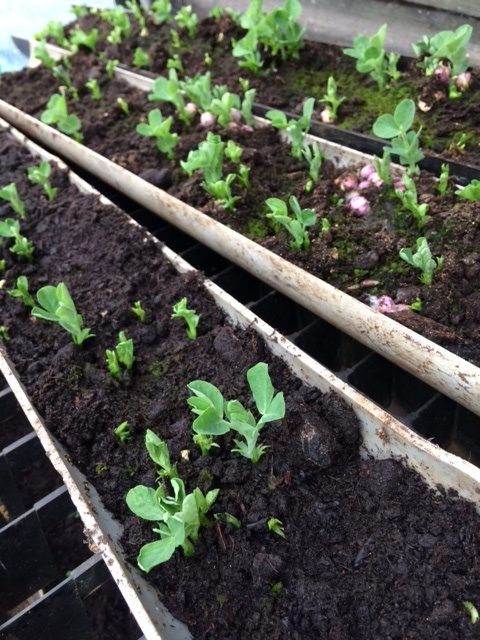I’ve started plotting …
First of all I set out the early pea seeds I want to grow on trays inside in the warm. If you place them on tissue paper on a tray, then keep them moist by the addition of a bit of water every day, they take five days or so to germinate. Once shoots start to appear, I transfer them to lengths of guttering half-filled with moist compost. (Remember to drill holes in the bottom of the guttering for drainage). Top up with compost and put them in a greenhouse. Green tips should start to appear after a few days. Even in these freezing January nights, the protection of a lean-to greenhouse is enough to keep them going and they get the benefit of real warmth when it’s sunny during the day. I have to watch for mice, but this method seems pretty easy.
When the peas are about three inches tall, I put them outside. (They can be slid out of their gutters quite easily, or transplanted individually). Depending on the weather, the small plants still do best with some protection, so I put up some glass or some kind of cloche to encourage growth. This is pretty low-tech, but it works.

This kind of approach also works with broad beans. In this case, use a deeper box or container is better than guttering. Wait until the broad beans are about 6 inches high before planting out. When you do this, remember to protect with netting because the crows seem to like pulling the plants up! Below is evidence of growth: another few days and the plants will be ready to go outside.
